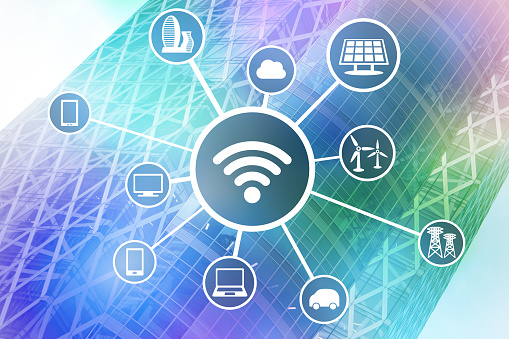
Introduction
The rapid advancements in technology have revolutionized the way we interact with our environment, and smart building networks have emerged as a key component in creating intelligent and efficient spaces. At the heart of these networks lies the powerful Wi-Fi 6 technology, which is poised to transform the way we connect and communicate within smart buildings. In this article, we will explore the importance and relevance of Wi-Fi 6 in smart building networks and delve into its impact on various aspects of this rapidly evolving ecosystem.
Historical Background
To truly understand the significance of Wi-Fi 6 in smart building networks, we must first take a journey through the evolution of Wi-Fi technology. From the early days of Wi-Fi to the current state-of-the-art standard, each iteration has brought forth new possibilities and addressed the limitations of its predecessors. With Wi-Fi 6 as the latest and most advanced standard, we can now overcome the challenges that plagued earlier versions and unlock the full potential of smart building networks.
Key Concepts and Definitions
Before diving into the intricacies of Wi-Fi 6 in smart building networks, it is essential to establish a common understanding of key concepts and definitions. Wi-Fi 6, with its improved speed, capacity, and efficiency, empowers smart building networks to support the increasing demands of modern-day connectivity. Moreover, understanding the integration of Wi-Fi 6 with smart building networks, as well as terms like IoT devices, network convergence, and intelligent building systems, will provide a solid foundation for the ensuing discussions.
Main Discussion Points
Benefits of Wi-Fi 6 in Smart Building Networks
Wi-Fi 6 brings forth a plethora of benefits to smart building networks. Firstly, it significantly increases network capacity and enhances overall performance, ensuring seamless connectivity for a large number of devices. Secondly, Wi-Fi 6 offers enhanced support for IoT devices and applications, enabling the deployment of sophisticated technologies for improved building automation and management. Lastly, with lower latency and improved user experience, Wi-Fi 6 revolutionizes the way occupants interact with smart buildings, making it a vital component for a seamless user experience.
Implementation and Deployment of Wi-Fi 6 in Smart Building Networks
Implementing Wi-Fi 6 in smart building networks requires careful consideration of infrastructure requirements and optimization strategies. From upgrading existing network infrastructure to deploying access points strategically, a comprehensive plan is crucial for successful implementation. Additionally, security considerations play a vital role in ensuring the integrity of Wi-Fi 6 networks within smart buildings, necessitating robust encryption protocols and authentication mechanisms.
Integration of Wi-Fi 6 with Other Building Technologies
Wi-Fi 6 doesn’t operate in isolation; rather, it integrates seamlessly with other building technologies to create a holistic smart building ecosystem. Integration with building automation systems allows for centralized control and monitoring of various building functions, resulting in improved energy efficiency and occupant comfort. Furthermore, integration with energy management systems enables intelligent energy consumption and optimization, while integration with access control and security systems ensures a secure and safe environment for building occupants.
Case Studies or Examples
Real-world examples of organizations and buildings adopting Wi-Fi 6 in their smart building networks provide tangible proof of its efficacy. From commercial office spaces to educational institutions, these case studies highlight the benefits and outcomes achieved through the implementation of Wi-Fi 6. Enhanced productivity, improved energy management, and seamless connectivity are just a few of the positive impacts witnessed by these early adopters.
Current Trends or Developments
The adoption of Wi-Fi 6 in smart building networks is steadily gaining momentum, and current trends reflect its growing popularity. From increased investments in infrastructure upgrades to the emergence of innovative applications and services, the future is promising for Wi-Fi 6 in smart buildings. Additionally, ongoing research efforts and advancements in Wi-Fi 6 technology are continuously reshaping the landscape, paving the way for even more intelligent and efficient smart building networks.
Challenges or Controversies
While Wi-Fi 6 brings forth numerous advantages, challenges and controversies also exist. Deploying Wi-Fi 6 in smart building networks requires careful planning to address potential compatibility and interoperability issues. Moreover, differing viewpoints surrounding Wi-Fi 6 implementation, particularly in terms of security concerns, need to be acknowledged and addressed to ensure successful integration in smart buildings.
Future Outlook
Looking ahead, Wi-Fi 6 is poised to play a pivotal role in shaping the future of smart building networks. As the technology continues to evolve, advancements beyond Wi-Fi 6 are already on the horizon. From increased speeds to further improvements in capacity and efficiency, the future of Wi-Fi technology holds immense potential. Furthermore, Wi-Fi 6 will act as a catalyst for enabling future smart building applications and technologies, propelling us towards a smarter and more connected world.
Conclusion
In conclusion, Wi-Fi 6 is the key to unlocking the full potential of smart building networks. Its numerous benefits, implementation considerations, and integration with other building technologies make it an indispensable tool for creating intelligent and efficient spaces. As the adoption of Wi-Fi 6 continues to expand and advancements in the technology emerge, it is vital for stakeholders to recognize its significance and explore its potential in creating a smarter future.